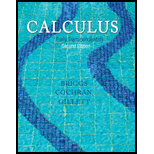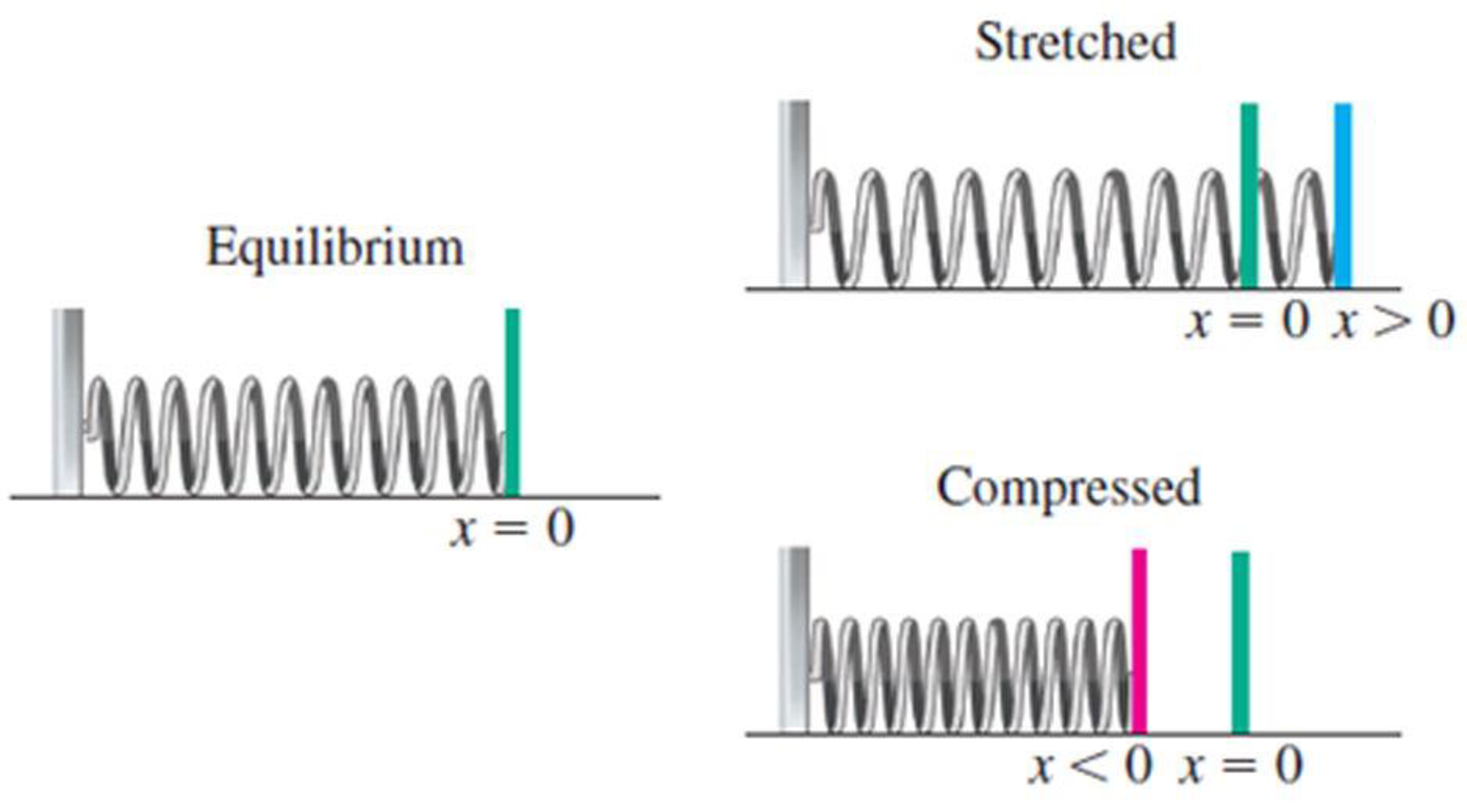
Applications
43–46. Horizontal oscillators The equation of motion for a spring-block system that lies on a horizontal surface (see figure) is the same as the equation of motion for a vertically suspended system. As before, m is the mass of the block, k is the spring constant, c is the damping coefficient (perhaps due to friction as the block slides on the surface), and Fext is an external force. We let x(t) be the position of the block at time t, where x increases to the right and x = 0 is the position of the block at which the spring is neither stretched nor compressed.

a. Find the position of the block in the following situations.
b. Graph the position function.
c. Describe the type of motion you observe.
45. m = 4 kg, c = 4 kg/s, k = 17 N/m,
Fext = 148 sin t, x(0) = 0, x′(0) = 0
Want to see the full answer?
Check out a sample textbook solution
Chapter D2 Solutions
Calculus: Early Transcendentals, 2nd Edition
- Find the slope of the tangent line to the graph of the function at the given point. m = 8 f(x) = 7x at (1,3) Determine an equation of the tangent line. y = Need Help? Read It Watch Itarrow_forwardFind the slope of the tangent line to the graph of the function at the given point. f(x) = -4x + 5 at (-1, 9) m Determine an equation of the tangent line. y = Need Help? Read It Watch It SUBMIT ANSWERarrow_forwardFind the slope of the tangent line to the graph of the function at the given point. f(x) = 5x-4x² at (-1, -9) m Determine an equation of the tangent line. y = Need Help? Read It Master It SUBMIT ANSWERarrow_forward
- For what value of A and B the function f(x) will be continuous everywhere for the given definition?..arrow_forward2. [-/1 Points] DETAILS MY NOTES SESSCALCET2 6.4.006.MI. Use the Table of Integrals to evaluate the integral. (Remember to use absolute values where appropriate. Use C for the constant of integration.) 7y2 y² 11 dy Need Help? Read It Master It SUBMIT ANSWER 3. [-/1 Points] DETAILS MY NOTES SESSCALCET2 6.4.009. Use the Table of Integrals to evaluate the integral. (Remember to use absolute values where appropriate. Use C for the constant of integration.) tan³(12/z) dz Need Help? Read It Watch It SUBMIT ANSWER 4. [-/1 Points] DETAILS MY NOTES SESSCALCET2 6.4.014. Use the Table of Integrals to evaluate the integral. (Use C for the constant of integration.) 5 sinб12x dx Need Help? Read Itarrow_forwardPlease refer belowarrow_forward
- Please refer belowarrow_forwardPlease refer belowarrow_forwardHi, can you guys help me with this? Thank you! Can you guys help me calculate again the Term GPA, Combined GPA, Cumulative GPA, Transfer GPA & Combined Cumulative GPA section? It's just not right right now. Here's the transfer totals point that I want to provide just in case you guys may ask where I get these from:arrow_forward
- Algebra & Trigonometry with Analytic GeometryAlgebraISBN:9781133382119Author:SwokowskiPublisher:Cengage
